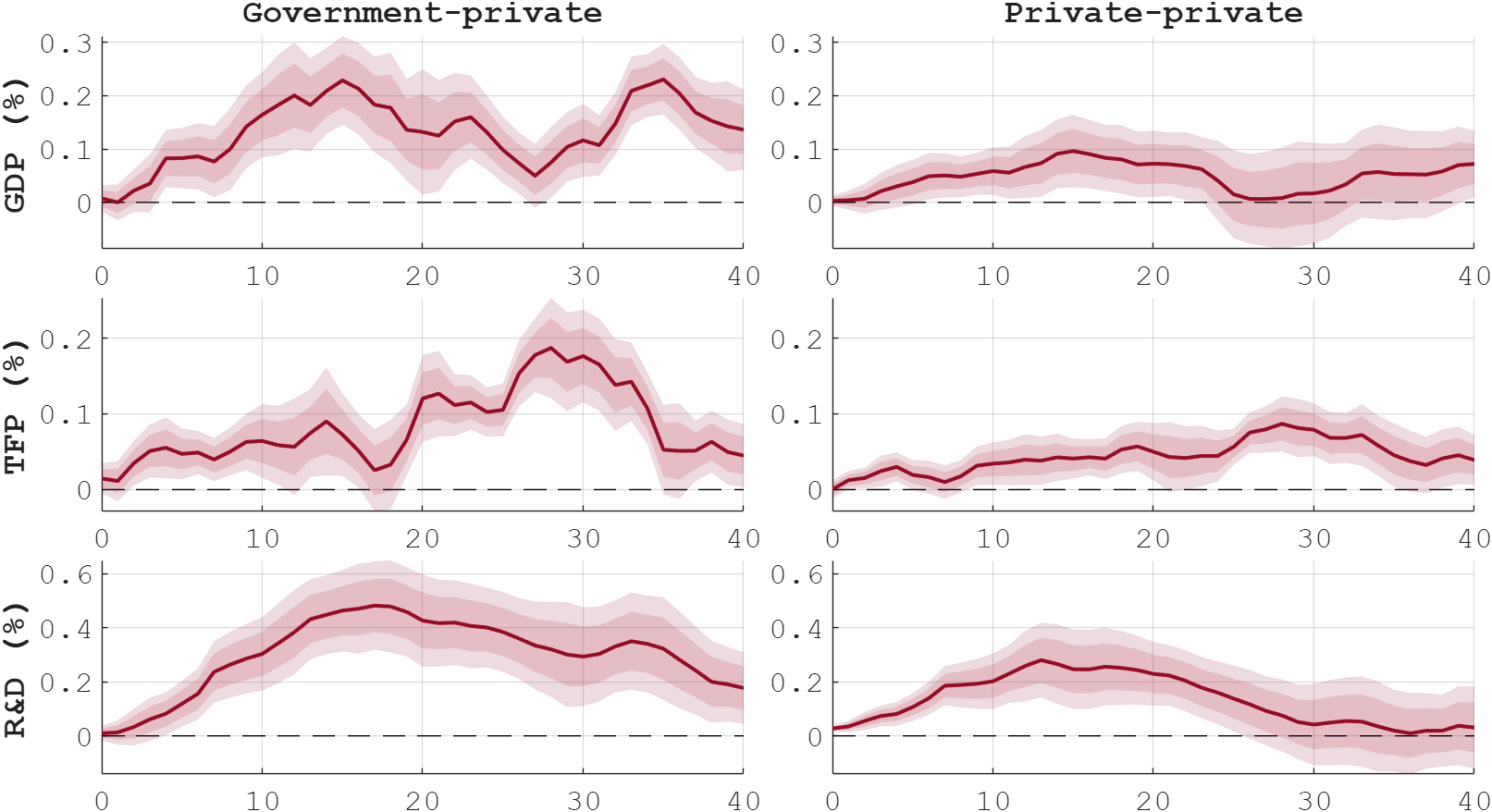In his latest response, Professor Hülsmann does not engage with several of the central points of my argument. Instead, he focuses on two issues: my use of the term ‘hyperinflation’ and the counterfactual question of what would have happened in Argentina if Javier Milei had closed the central bank on his first day in office.
The term hyperinflation
Let us start with the first point. Professor Hülsmann states that “Professor Bagus apparently wishes to use the word ‘hyperinflation’ for any situation in which the price level reaches some critical threshold of strong CPI increases”. He considers my use of “hyperinflation” an “abuse of language.” Let me say just three things.
First, to define hyperinflation as periods of very high price inflation may be considered an “abuse of language”, but it is not my invention but the standard use of the term ‘hyperinflation’ and adopted also by Peter Bernholz (2015) who follows Philip Cagan (1956). Cagan considers price inflations to be hyperinflations where the price inflation rate exceeded at least in one month 50%.
“Price level” is a meaningless concept
Second, while Professor Hülsmann accuses me of “abuse of language”, in his terminological objections to my reply he is no less prone to using equivocal and misleading terms that can only create confusions. For instance, he uses the expression ‘price level’ no fewer than eight times in his article. Ludwig von Mises (2006, p. 58-59) strictly opposed the use of this confusing term:
The metaphorical expression ‘price level’ must never be used. When people talk of a price level’, they have in mind the image of a level of a liquid which goes up or down according to the increase or decrease in its quantity, but which, like a liquid in a tank, always rises evenly. But with prices, there is no such thing as a ‘level.’ Prices do not change to the same extent at the same time. There are always prices that are changing more rapidly, rising or falling more rapidly than other prices.
It is noteworthy that Professor Hülsmann uses the term “price level” when price inflation stems from a fall in the demand for money, but does not use the term when he describes hyperinflation driven by increases in supply. In the second scenario, the term “price level” disappears. The use of “price level” in the first scenario where price inflation is driven by demand hides the redistribution effects (between residents themselves), and thereby artificially increases the asymmetry between the two processes. If Professor Hülsmann had used the term “price level” in the second scenario the redistribution effects which he emphasizes would disappear. The increase in “price level” would solve the problem of excess cash balances.
Legal tender laws, state enforcement and money demand
Another “abuse of language” occurs when Professor Hülsmann writes that “when the money supply explodes and the demand for money is coercively stabilized with brutally enforced legal tender laws. The redistribution of incomes and wealth is massive and may last for many months and even years.”(italics added)
The reference to ‘brutally’ enforced laws is unnecessary and misleading. State enforcement operates not only through the threat of coercion but also—indeed, primarily—through ideology. In modern monetary systems, legal-tender provisions function through ideological and institutional channels, not through the application of brute physical violence. The adverb ‘brutally’ therefore suggests a degree of force that is neither inherent in legal-tender rules nor observed in their practical operation. Moreover, Professor Hülsmann appears to overestimate the actual importance of legal-tender laws for the demand for fiat money. Money demand is shaped far more by monetary expectations, institutional credibility, and fiscal conditions than by legal-tender rules.
Money serves both as a medium of exchange and as a hedge against felt uncertainty. When a qualitative deterioration of money is on the horizon- the money stock being one, but not the only factor determining money’s quality– market participants start to get rid of money as hot potatoes. It is unclear that legal tender laws could inhibit market participants selling money quickly. In other words, these laws could not stabilize the demand for money as Hülsmann suggests. Interestingly, Hülsmann attributes a strong stabilizing effect on money demand to legal-tender laws and taxation, yet maintains that the closure of a central bank, a government default, or even a banking collapse would not reduce the demand for money—and might even increase it. Furthermore, as Ludwig Mises has pointed out during the first phase of high money stock growth and price inflation, market participants increase their cash balances but not because legal tender laws are less brutally enforced but because they expect that prices will return to normal in the future. Expectations are more fundamental and important than legal tender laws. Adding the predicate “brutally enforced” to legal tender laws does not change that.
The essential matter: confidence in money trumps the money stock
Third—and most importantly—I am not concerned with terminological labels but with the essence of the matter. My argument is simply that even with a constant money stock, a currency can lose its purchasing power if demand collapses. A medium of exchange that loses its function because no actor subjectively values its future purchasing power ceases to exist as money. The quantity in circulation is then irrelevant; it becomes waste paper. As I had already noted in a footnote in my first response, whether one prefers to call the final stage of a currency’s collapse “hyperinflation”, “wild inflation” or “demonetisation” is merely a terminological matter. The essential question is whether the currency’s purchasing power would vanish once confidence and demand collapse. A praxeological analysis of money validates this conclusion.
Let us now turn to the empirical issues and address three points.
Theory and History
First, it is time to recall the role of theory and history in Austrian methodology. Within Austrian methodology, empirical cases may illustrate a theoretical proposition but cannot validate or refute it. Hülsmann’s reply essentially demands an empirical example of demonetization-driven hyperinflation. But the scenario under discussion—the abolition of a central bank on the first day of a new government in a country with an over-indebted public sector, a consolidated deficit of 15 percent of GDP, a history of hyperinflations and sovereign defaults, and a population that does not trust the national currency—has no historical precedent. By Hülsmann’s own standard, his claim that such an event would not result in monetary collapse likewise lacks empirical support. While empirical illustrations may be of interest, they are not decisive for the argument. What matters is the praxeological reasoning, which stands independently of any historical illustration.
Yes, Argentina was approaching hyperinflation
Second, Professor Hülsmann suggests that Argentina was not about to experience a hyperinflation when Milei assumed power: “Even if we look at the price-inflation index and contrast it with the monthly growth rates of M0 and M1, we do not find any evidence of a situation resembling advanced stages of a hyperinflation.”
My historical interpretation is different. The consumer price index was increasing 9.8% monthly in October 2023. In November 2023, it increased already 12.8%. In December, when Milei assumed office, the price inflation rate soared to 25.5%. The momentum is clear. Moreover, the producer price index, which typically anticipates movements in consumer prices, rose by an extraordinary 54% in December 2023—well above Cagan’s 50% threshold for hyperinflation. During the first days of December 2023, the inflation rate reached 1 percent per day, which annualizes to roughly 3,670 percent. The spike in price inflation rates is the clearest indication that peso demand was collapsing when Milei took office.
Fixed exchange rate and convertibility
Third, Professor Hülsmann writes: “The peso was on a permanent downhill trajectory. How could there be any hope for convertibility at a fixed rate?” Firstly, there was already a de facto fixed exchange rate regime in Argentina when Milei assumed office. The government did not allow free convertibility at the rate that overvalued the peso but instituted capital controls (the CEPO). Second, it is therefore incorrect to imply that convertibility was impossible. Argentina had operated under convertibility until 2001, and Milei explicitly proposed a dollarization scheme involving the redemption of pesos into the central bank’s dollar reserves.Third, Hülsmann is correct that the peso as all fiat money is permanently losing in value. Ludwig von Mises in his monetary reform plan from 1953 published as part four “Monetary Reconstruction” in the English edition of The Theory of Money and Credit presents four main stages. First, stop issuing more money. Second, Mises demands a period of stabilization. Third, fix the exchange ratio between the old depreciated money and the new standard (gold). Fourth, introduce full convertibility at the fixed exchange rate. In other words, it is entirely possible to stop money printing and make an old currency convertible into a new currency at a fixed exchange rate. This directly contradicts the suggestion that fixed-rate convertibility was inherently impossible in Argentina.
Professor Hülsmann’s partial analysis of Monetary Aggregates
Finally, I would like to shed light on an empirical fact in Argentina that Professor Hülsmann may not be aware of and which was important for the demand for pesos and this is the suppressed inflation or sterilization that was conducted by the previous government. Thereby, there was monetary inflation that does not show up in the figures of M0 and M1 that Hülsmann presents and which is important for the correct interpretation of these figures.
Imagine the Federal Reserve were to buy $100 billion worth of government bonds creating new reserves in the process but then issues $90 billion 30-day notes with attractive interest rates which are bought by the banks. Then 90% of the newly created reserves flow back to the Federal Reserve and are sterilized. Only $10 billion of new reserves enter the economy. Yet, there are two things to take into account. First, after 30 days the notes come due and the $90 billion would finally enter the economy. To prevent this from happening the Federal Reserve could roll over the notes. Second, the Federal Reserve must pay interest on the notes printing new money. So there is a problem which does not show up in M0 or M1 because the notes issued by the Federal Reserve do not form part of these aggregates.
What we just described as a thought experiment for the Federal Reserve happened in Argentina before Milei took office, with the characteristics that the outgoing government reduced the term of most of the notes to 1 day paying up to 135% annualized interest. This resulted in a central-bank deficit of about 10% of GDP in 2023, financed with newly created pesos. In December 2023 the monetary base was 9,182,107 million pesos. Peso notes and short-term liabilities issued by the central bank amounted to 23,854,402 million pesos, that is about 2.6 times the monetary base. Thus, a time bomb was hanging over the economy like the sword of Damocles that could have multiplied by 3.6 the monetary base from one day to the next.
Understating inflationary pressures
Any analysis that abstracts from these remunerated liabilities treats only a fraction of the effective monetary expansion and therefore systematically understates inflationary pressures. By analogy the US monetary base is US $5.478 trillion as of September 2025. If the U.S. monetary base were to expand by the same factor—3.6 times—it would instantly rise from US $5.478 trillion to roughly US $19.7 trillion. Such a time bomb would have important implications for the demand for dollars and inflationary expectations. No wonder the demand for pesos collapsed and Argentines rushed into the dollar at the end of 2023. Not accounting for these remunerated liabilities leads to misinterpretation of the monetary situation. The peso demand collapse at the end of 2023 cannot be understood without acknowledging this sterilization mechanism.
Historical precedents and counterfactual analysis
It may be argued that historical hyperinflations have always involved substantial increases in the money stock. Yet such observations do not engage with the logical point at stake. Whether or not a historical precedent can be cited is immaterial for a counterfactual analysis; and in any case, Professor Hülsmann’s own position concerning what ‘would’ or ‘would not’ have happened equally lacks empirical illustration. A counterfactual cannot be overturned by the absence of a historical example, nor supported by selectively chosen ones. The essential question is whether a currency can lose its function as a medium of exchange when the demand for it collapses, even if its quantity remains unchanged. Since this is a praxeological truth, it does not require empirical validation, and no list of historical episodes can overturn it. Nor does the Argentine case contradict it; on the contrary, the empirical data—especially the massive stock of sterilized and remunerated liabilities and the flight from the peso at the end of 2023—suggest that the peso was already experiencing severe pressures on the demand side. Any response that focuses on terminology, imperfect historical analogies, or selectively chosen aggregates would therefore leave the core issue untouched.
Conclusion
In sum, Hülsmann’s latest reply does not engage the substance of my argument but shifts the discussion toward terminology and lists of historical episodes. Yet neither semantic disputes nor empirical enumerations touch the theoretical core: a currency can collapse through a fall in money demand even when its quantity remains unchanged. Likewise, the distinction between monetary and non-monetary (tax-driven) demand remains unanswered. By avoiding these issues, his response leaves the logic of my analysis untouched. Moreover, the empirical reality of Argentina’s situation—above all the massive stock of remunerated central-bank liabilities that suppressed the monetary aggregates he relies upon—remains wholly unexamined. Any assessment of peso demand or inflationary prospects that abstracts from these sterilized liabilities necessarily misinterprets the monetary dynamics of late 2023. Thus, both theoretically and empirically, Hülsmann’s response leaves the essence of the argument untouched.
This exchange has made clear where the decisive point lies. The debate does not hinge on terminology, nor on enumerations of historical episodes, nor even on the particular complexities of the Argentine case. The issue is conceptual: whether a currency can cease to function as money when its demand collapses, irrespective of whether its quantity increases, remains constant, or even decreases. That question has been settled from the beginning by the very logic of money. The additional empirical considerations I have introduced—concerning inflation dynamics, sterilized monetary expansion, and remunerated liabilities—only reinforce this conclusion. Should further disagreement persist, it will concern matters external to the core argument and cannot alter its praxeological validity.


























